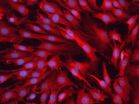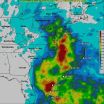(Press-News.org) We humans organize ourselves in myriad kinds of social groups, from scout troops and sports teams to networks of friends, colleagues, or classmates. But how do these social groups work? How do we decide whom to trust and whom to follow? And how do we deal with people that don't seem to fit the norms of our social groups?
New research published in Psychological Science, a journal of the Association for Psychological Science, explores these issues by examining various facets of social perception and behavior.
The Herding Hormone: Oxytocin Stimulates In-Group Conformity
Mirre Stallen, Carsten K. W. De Dreu, Shaul Shalvi, Ale Smidts, and Alan G. Sanfey
People tend to conform to the behaviors of those they associate with, but not much is known about the mechanisms driving this. Psychological scientist Mirre Stallen of the Donders Institute for Brain, Cognition and Behaviour at Radboud University and her colleagues investigated whether hormonal mechanisms might play a role. Specifically, they wondered whether the neuropeptide oxytocin – known to facilitate prosocial behavior – might be at work. Male participants were given a dose of the oxytocin or a placebo. They were then told that they would be divided into two groups to complete a task that involved rating the attractiveness of unfamiliar symbols. Before making their decisions, the participants could see the ratings of the other people inside and outside of their group. When the in-group and out-group members' ratings differed, participants given oxytocin conformed more closely to the in-group's scores. This conformity effect was not seen in the placebo group. Together, these findings suggest that oxytocin can influence subjective preferences and may stimulate individuals to conform to the behavior and beliefs of others in their group. Stallen and colleagues note that the finding that oxytocin stimulates conformity toward in-group members, but not out-group members, will help researchers to develop a more refined theory of the effects of oxytocin on social judgment and behavior.
Corresponding author: Mirre Stallen – Donders Institute for Brain Cognition and Behaviour at Radboud University, the Netherlands – M.Stallen@donders.ru.nl
Treating Prejudice: An Exposure-Therapy Approach to Reducing Negative Reactions Toward Stigmatized Groups
Michèle D. Birtel and Richard J. Crisp
Exposure therapy has been used to treat many types of phobias, but can it also be used to reduce prejudice against stigmatized groups? In three different experiments, psychological scientists Michèle Birtel and Richard Crisp examined whether a form of exposure therapy – activating negative thoughts and feelings before introducing positive countervailing thoughts – might be effective at reducing intergroup anxiety toward stigmatized groups (e.g., adults with schizophrenia, gay men, British Muslims). In each experiment, the researchers assigned participants to one of two groups: One group was asked to imagine two instances of positive contact with a person of the stigmatized group, while the other group was asked to imagine an instance of negative contact and an instance of positive contact with a person of the stigmatized group. Participants' intergroup anxiety and future contact intentions toward individuals in the stigmatized groups were then assessed. Taking the findings of the three experiments together, participants who first imagined a negative encounter and then a positive encounter reported lower intergroup anxiety and higher future-contact intentions than did participants who only imagined positive encounters. Birtel and Crisp conclude that "a small dose of negativity administered just prior to a positively focused intervention can be surprisingly effective in reducing prejudice toward stigmatized groups."
Corresponding author: Michèle Birtel – University of Oxford, UK – michele.birtel@psy.ox.ac.uk
The Stranger Effect: The Rejection of Affective Deviants
Lauren Szczurek, Benoît Monin, and James J. Gross
How do react to people who display unexpected emotional responses? Researcher Lauren Szczurek and colleagues at Stanford University asked participants to view a slideshow of positive, neutral, or negative images and a video of a viewer's responses to the images. In some cases, the viewer's responses matched up with the content of the video (e.g., positive emotional expressions in response to positive images), and in others, they were deviant. Interestingly, participants reported more negative judgments toward deviants who showed incongruent responses (e.g., positive emotional expressions to negative images) than toward deviants who showed flat expressions (e.g., no discernible emotional response). Participants reported preferring greater social distance from deviant viewers because they felt they shared fewer moral values with the deviant viewers. According to the researchers, these findings illustrate how subtle departures from what we consider to be "normative" affect can have significant and severe social consequences.
Corresponding author: Lauren Szczurek – Stanford University - laurensz@stanford.edu
###
Please contact Anna Mikulak at 202-293-9300 or amikulak@psychologicalscience.org for more information.
END
Contact:
Iman Hajirasouliha, 778.782.7040, 604.418.4834 (cell), imanh@sfu.ca
Carol Thorbes, PAMR, 778.782.3035, cthorbes@sfu.ca
Flickr: http://at.sfu.ca/skirFz END ...
(SACRAMENTO, Calif.) — A team of UC Davis investigators has discovered a protein on the surface of lung cancer cells that could prove to be an important new target for anti-cancer therapy. A series of experiments in mice with lung cancer showed that specific targeting of the protein with monoclonal antibodies reduced the size of tumors, lowered the occurrence of metastases and substantially lengthened survival time. The findings will be published in the November issue of Cancer Research.
"Lung cancer continues to be one of the biggest killers in the United States, and ...
Negatively framed political attitudes ("I don't like Obama") are stronger than positively framed attitudes ("I like Romney"), and this effect is strengthened when people think more deeply about the issues involved.
That is the finding of a paper published in the latest issue of the British Journal of Social Psychology by George Bizer, a psychology professor at Union College in Schenectady, N.Y.
Bizer and his co-authors Iris Žeželj (University of Belgrade) and Jamie Luguri (Yale University) presented participants with information about two fictional (though ostensibly ...
In one of the largest studies of its kind ever conducted, an international team of scientists has thrown new light on the genetic basis of the inflammatory bowel diseases (IBD). Crohn's disease and ulcerative colitis, the two most common forms of IBD, are chronic inflammatory digestive disorders affecting 230,000 Canadians. Dr. John Rioux, researcher at the Montreal Heart Institute and Associate Professor of Medicine at the Université de Montréal, is one of the researchers who have identified 71 genetic regions newly associated with inflammatory bowel disease (IBD), increasing ...
Adding an angiogenesis inhibitor to treatment with a HER2-inhibiting drug could improve outcomes for patients with HER2-positive breast cancer who develop brain metastases. In their report published online in PNAS Plus, Massachusetts General Hospital (MGH) investigators report the first preclinical study combining antiangiogenic and anti-HER2 drugs in an animal model of brain metastatic breast cancer.
"We have shown dramatic improvement in survival by slowing the growth of brain metastatic, HER2-amplified breast cancer," says Rakesh Jain, PhD, director of the Steele ...
PHILADELPHIA - Arterial stiffening has long been considered a major risk factor for cardiovascular disease. Keeping arteries soft and supple might reduce disease risk, but the mechanisms of how arteries stave off hardening has remained elusive.
Researchers from the Perelman School of Medicine, University of Pennsylvania, Wistar Institute, and The Children's Hospital of Philadelphia have discovered that the protein apolipoprotein E (apoE) plays a major role in maintaining arterial softness by suppressing production of the extracellular matrix, a network of connective ...
AMES, Iowa – The human body has more than a trillion cells, most of them connected, cell to neighboring cells.
How, exactly, do those bonds work? What happens when a pulling force is applied to those bonds? How long before they break? Does a better understanding of all those bonds and their responses to force have implications for fighting disease?
Sanjeevi Sivasankar, an Iowa State assistant professor of physics and astronomy and an associate of the U.S. Department of Energy's Ames Laboratory, is leading a research team that's answering those questions as it studies ...
NASA's Tropical Rainfall Measuring Mission, or TRMM, satellite acts as a rain gauge in space as it orbits the Earth's tropics. As TRMM flew over Hurricane Sandy since its birth on Oct. 21 it was gathering data that has now been mapped to show how much rain the storm dropped along the U.S. eastern seaboard.
Much of the recent deadly flooding along the northeastern United States coastlines was caused by super storm Sandy's storm swell. Strong winds from Sandy persistently pushed Atlantic Ocean waters toward the coast. High tides that occurred at the same time also magnified ...
Wind shear is pushing the bulk of Tropical Storm Rosa southeast of the storm's center, and that's evident on infrared imagery from NASA's Aqua satellite. Meanwhile System 99E, that was trailing behind Rosa on Oct. 31, has now "given up the ghost" as a result of that same wind shear.
When NASA's Aqua satellite flew over Tropical Storm Rosa at 5:41 a.m. EDT (0951 UTC) on Nov. 1, 2012 the Atmospheric Infrared Sounder (AIRS) instrument took an infrared picture of Tropical Storm Rosa and remnants of System 99E. The AIRS data showed the strongest convection (rising air that ...
Parents with social anxiety disorder are more likely than parents with other forms of anxiety to engage in behaviors that put their children at high risk for developing angst of their own, according to a small study of parent-child pairs conducted at Johns Hopkins Children's Center.
Authors of the federally funded study say past research has linked parental anxiety to anxiety in children, but it remained unclear whether people with certain anxiety disorders engaged more often in anxiety-provoking behaviors. Based on the new study findings, they do. A report on the team's ...



